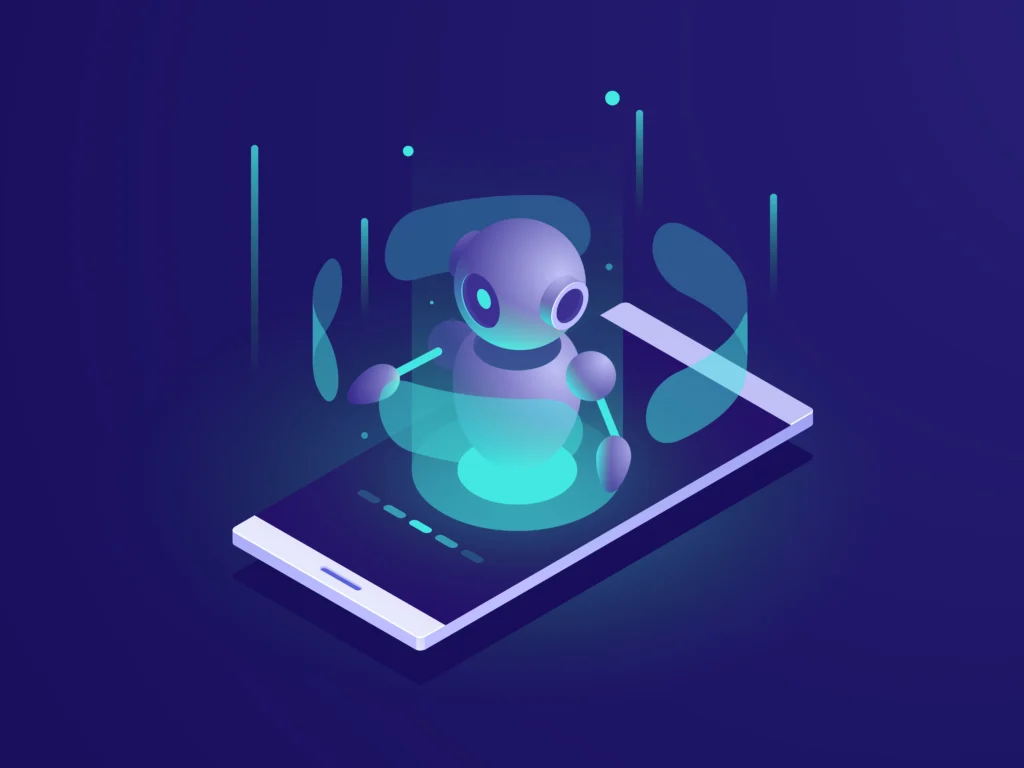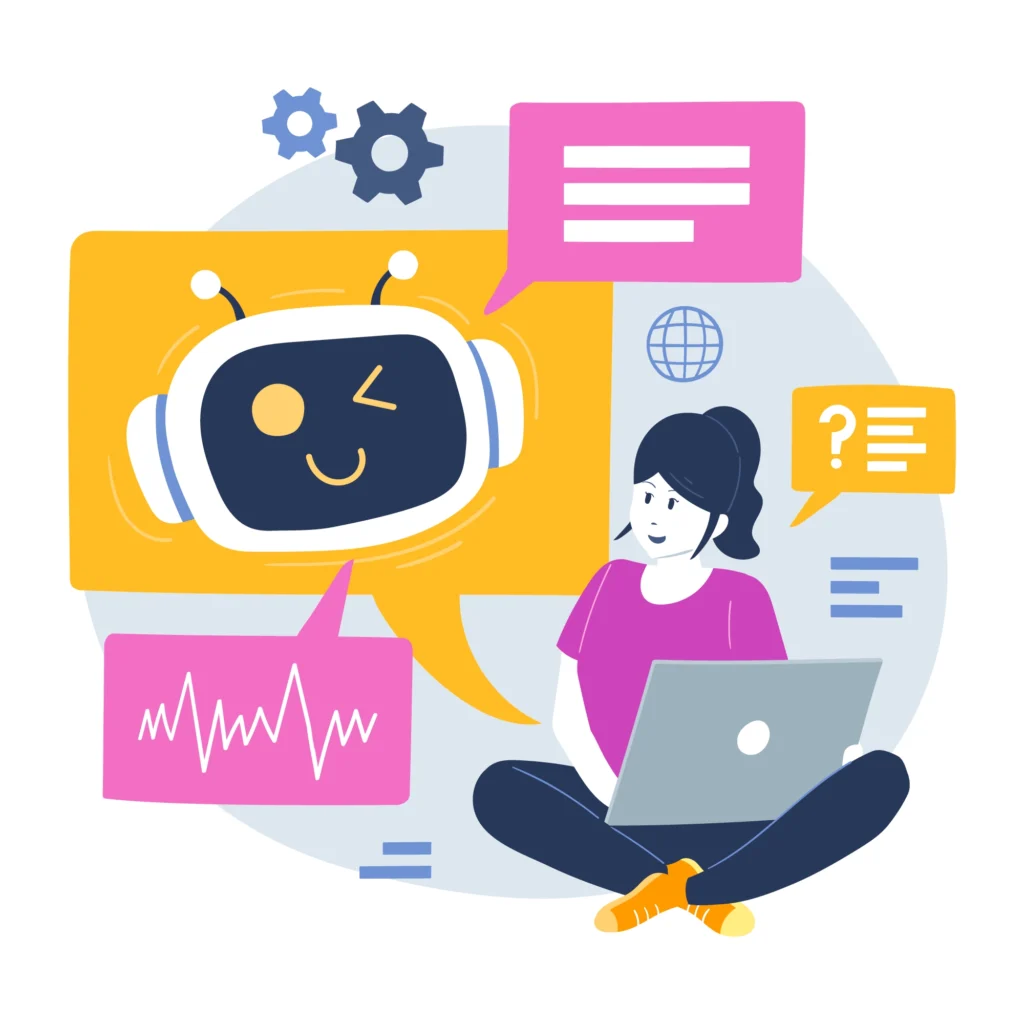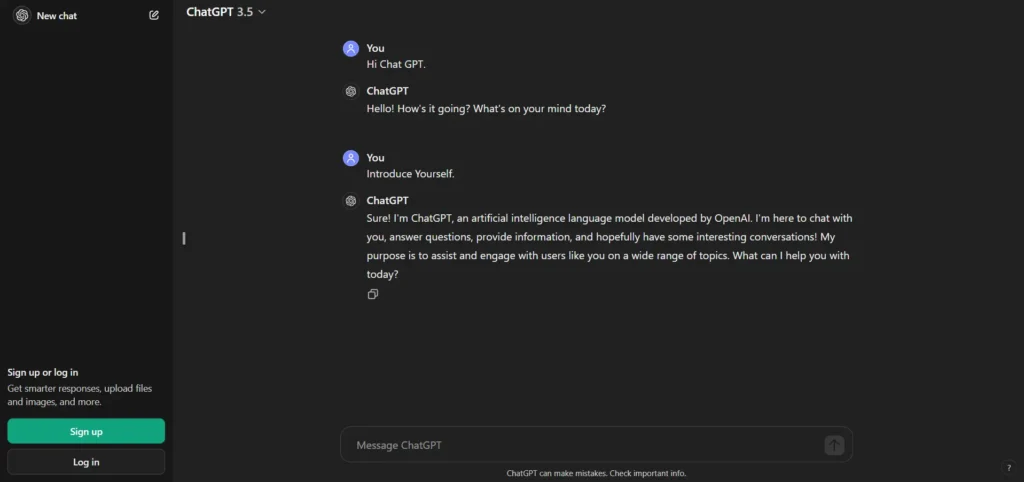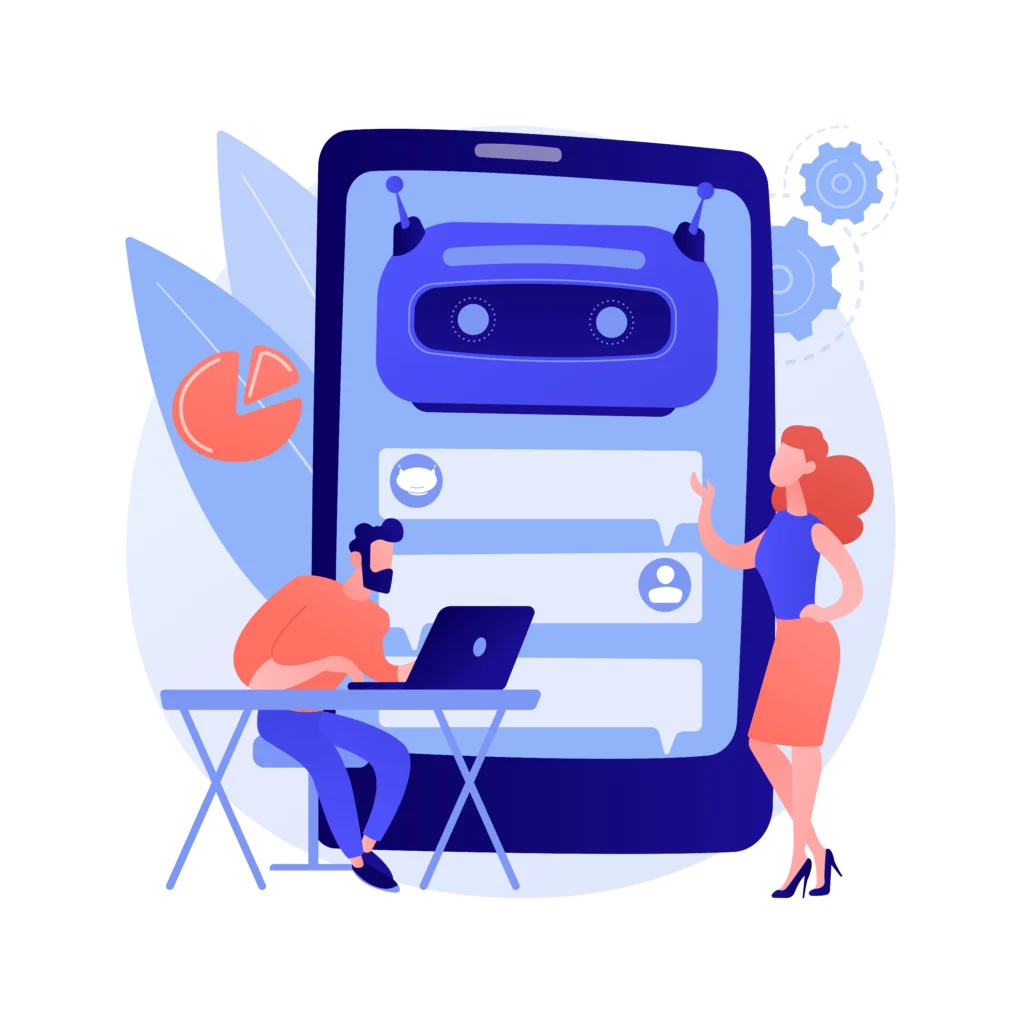
In recent years, Artificial Intelligence (AI) chatbots have transformed the way businesses interact with their customers. These intelligent virtual assistants have enabled companies to provide 24/7 customer support, improve response times, and enhance overall customer experience. In this article, we’ll delve into the world of AI chatbots, exploring their types, functionality, benefits, and applications. We’ll also discuss prominent AI chatbot companies, open-source platforms, and provide a step-by-step guide on how to create your own AI chatbot.
Types of Artificial Intelligence Chatbots:
There are three main types of Artificial Intelligence Chatbots.
1. Rule-based chatbots:
- Use pre-defined rules and scripts to generate responses.
- Limited ability to understand user input.
- Can only respond based on specific keywords or phrases.
Examples: Simple customer support chatbots, FAQ chatbots.
2. Machine learning chatbots:
- Use machine learning algorithms to learn from user interactions.
- Can understand user input and respond accordingly.
- Require large amounts of training data to be effective.
Examples: Virtual assistants, chatbots for complex customer support.
3. Hybrid chatbots:
- Combine rule-based and machine learning approaches.
- Offer a balanced blend of structure and adaptability.
- Can handle both simple and complex user queries.
Examples: Chatbots for e-commerce, chatbots for healthcare.
How an Artificial Intelligence Chatbot Works?

AI chatbots employ natural language processing (NLP) and machine learning algorithms to understand and respond to user queries. The architecture of an AI chatbot typically consists of:
- User interface: Users interact with the chatbot through a messaging platform or website. User input is received through text or voice input.
- Natural language processing (NLP): The chatbot analyzes user input to identify intent and extract relevant information. It uses some techniques like tokenization, entity recognition, and sentiment analysis.
- Intent recognition: The chatbot determines the user’s intent and retrieves relevant responses. Uses machine learning algorithms to improve intent recognition over time.
- Response generation: The chatbot generates a response based on the user’s intent and context. Uses natural language generation techniques to create a human-like response.
Artificial Intelligence Chatbot ChatGPT.

Here’s some features of Chat GPT.
1. Contextual understanding:
- Understands the context of the conversation and can respond appropriately.
- Uses techniques like contextualized embeddings and attention mechanisms.
2. Conversational dialogue:
- Engages in conversational dialogue, using its understanding of context and intent.
- Can respond to follow-up questions and engage in multi-turn dialogue.
3. Emotional intelligence:
- Recognizes and responds to user emotions, providing a more personalized and empathetic experience.
- Uses techniques like sentiment analysis and emotional entity recognition.
4. Knowledge base integration:
- Integrates with knowledge bases to provide accurate and up-to-date information.
- Uses techniques like entity linking and knowledge graph embedding.
Ai Chatbot Companies:
1. IBM Watson Assistant:
- A cloud-based AI platform for building and deploying chatbots.
- Offers natural language understanding, machine learning, and integration with various platforms.
2. Microsoft Bot Framework:
- A set of tools for building and deploying chatbots on the Microsoft platform.
- Offers natural language understanding, machine learning, and integration with various platforms.
3. Amazon Lex:
- A service for building conversational interfaces into applications.
- Offers natural language understanding, machine learning, and integration with various platforms.
4. Google Dialogflow:
- A platform for building chatbots and conversational interfaces.
- Offers natural language understanding, machine learning, and integration with various platforms.
Artificial Intelligence Chatbot Open Source:
1. Rasa:
- An open-source conversational AI platform.
- Offers natural language understanding, machine learning, and integration with various platforms.
2. Dialogflow:
- An open-source platform for building chatbots and conversational interfaces.
- Offers natural language understanding, machine learning, and integration with various platforms.
3. Botpress:
- An open-source platform for building chatbots and conversational interfaces
- Offers natural language understanding, machine learning, and integration with various platforms
How to Make Artificial Intelligence Chatbot:
1. Defining the chatbot’s purpose and scope:
- Determine the chatbot’s goals and the tasks it will perform.
- Identify the target audience and the platforms to be used.
2. Choosing a development platform or framework:
- Select a platform or framework that aligns with the chatbot’s purpose and scope.
- Consider factors like natural language understanding, machine learning, and integration with various platforms.
3. Designing the chatbot’s conversation flow:
- Create a flowchart or diagram to illustrate the chatbot’s conversation flow.
- Identify the different states and transitions in the conversation flow.
4. Integrating NLP and machine learning algorithms:
- Use NLP and machine learning algorithms to enable the chatbot to understand user input and generate responses.
- Consider factors like entity recognition, sentiment analysis, and contextual understanding.
5. Testing and refining the chatbot:
- Test the chatbot with a variety of inputs and refine its performance over time
- Use techniques like alpha testing, beta testing, and A/B testing to evaluate the chatbot’s performance
Talk to Artificial Intelligence Chatbot:
Interactive AI chatbots have numerous applications, including:
- Customer support.
- Virtual assistance.
- Language translation.
- Sentiment analysis.
Conclusion:

Artificial Intelligence chatbots have revolutionized customer interaction, enabling businesses to provide personalized support and improve overall customer experience. By understanding the types, functionality, and applications of AI chatbots, companies can harness their potential and stay ahead in the competitive market. Whether you’re a developer or a business owner, the world of Artificial Intelligence chatbots offers exciting opportunities for innovation and growth.
Related Content:
Frequently Asked Questions:
Artificial Intelligence (AI) chatbots are computer programs that use natural language processing (NLP) and machine learning algorithms to simulate human-like conversations with users. They are designed to understand and respond to user inputs, providing helpful and informative responses.
AI chatbots work by using NLP to analyze user inputs, such as text or voice messages, and then generating responses based on that analysis. They use machine learning algorithms to learn from user interactions and improve their responses over time. Some chatbots may also use additional technologies, such as sentiment analysis and entity recognition, to better understand user inputs and provide more accurate responses.
There are several benefits to using AI chatbots, including:
– Improved customer service: Chatbots can provide 24/7 customer support, answering questions and responding to user queries in a timely and efficient manner.
– Increased efficiency: Chatbots can automate routine tasks, freeing up human customer support agents to focus on more complex issues.
– Cost savings: Chatbots can reduce the need for human customer support agents, saving companies money on labor costs.
– Personalization: Chatbots can be programmed to provide personalized responses and recommendations based on user inputs and preferences.
Some AI chatbots can understand sarcasm and humor, but it depends on the sophistication of the chatbot’s NLP algorithms. Some chatbots may struggle to understand sarcasm and humor, as these forms of language can be nuanced and context-dependent. However, more advanced chatbots that use machine learning algorithms and natural language understanding (NLU) techniques may be better able to understand and respond appropriately to sarcastic or humorous inputs.
Yes, AI chatbots can be used for marketing and sales. Chatbots can be programmed to provide product recommendations, answer questions about products or services, and even assist with transactions. They can also be used to collect data and insights on user behavior and preferences, which can be used to inform marketing and sales strategies.
AI chatbots can be secure, but it depends on how they are designed and implemented. Chatbots that use encryption and secure authentication protocols can protect user data and prevent unauthorized access. However, chatbots that are not properly secured can be vulnerable to cyber attacks and data breaches. It’s important for companies to prioritize security when designing and deploying chatbots.
While AI chatbots can automate many routine customer support tasks, they are not yet capable of replacing human customer support agents entirely. Chatbots lack the emotional intelligence and empathy of human agents, and may struggle to understand complex or nuanced user queries. However, chatbots can be used to supplement human customer support, providing a hybrid approach that combines the efficiency of automation with the empathy and understanding of human agents.
Building an AI chatbot requires a range of skills and technologies, including NLP, machine learning, and software development. Some companies may choose to build their own chatbots from scratch, while others may use chatbot development platforms or hire third-party developers to build their chatbots. When building a chatbot, it’s important to consider the chatbot’s purpose, the target audience, and the technologies and resources needed to support the chatbot.
